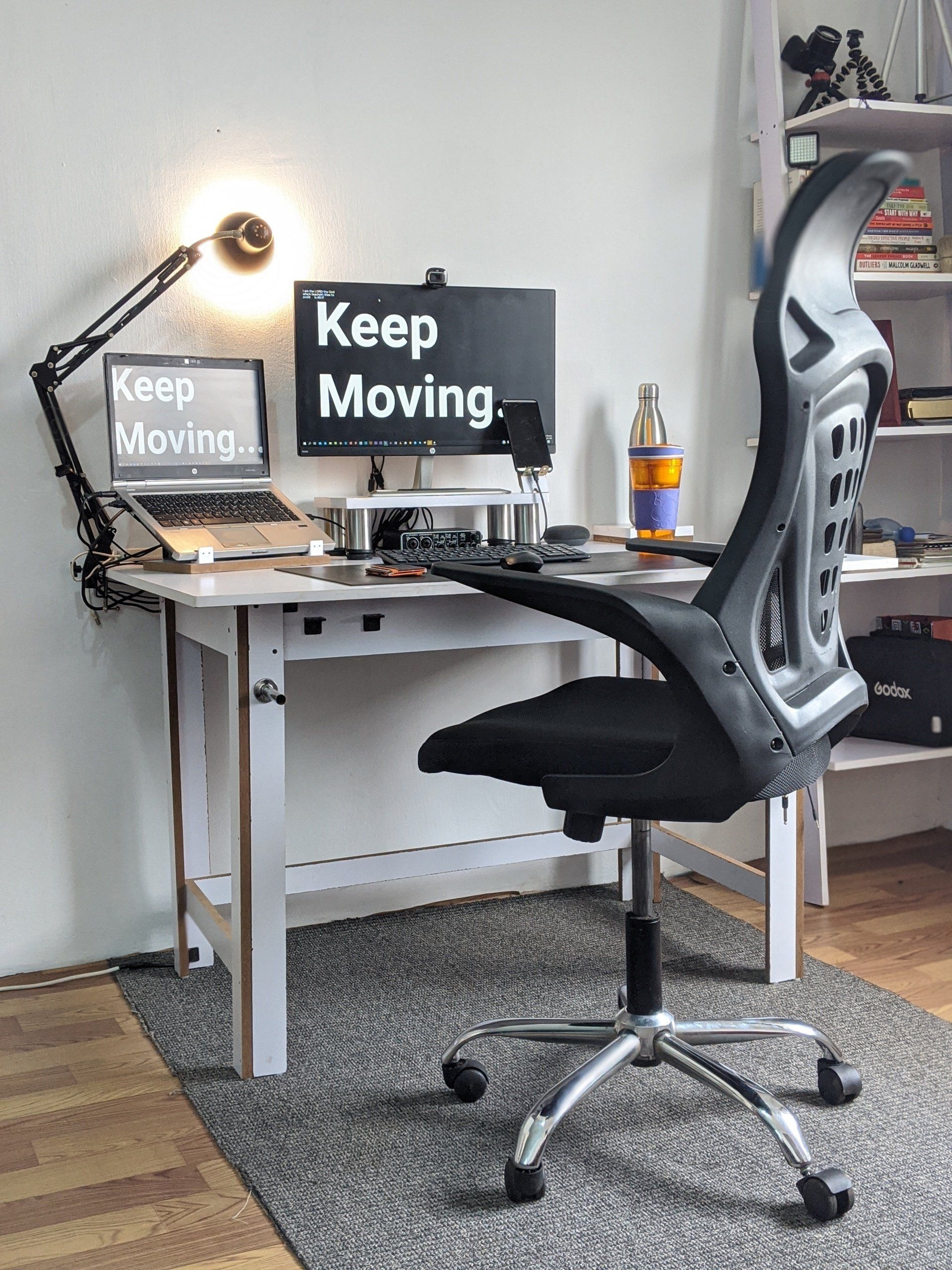Eaton Chiropractic CENTER
Our Blog

Two of our most time-tested and influential texts are lists of ten: The Bill of Rights and the Ten Commandments. The first defines basic freedoms in the United States and the second presents requirements for living as moral human beings. Each of these profound texts is simply a list: an ordered sequence of items with a brief description accompanying each item. 1. Externalizing what we need to remember. Lists are useful because they document what we ordinarily forget. Memory strongly prefers internal structure, and without this structure, remembering is hard work. Unlike stories—in which events are connected by cause and effect—items on a list have no internal structure, except verticality. The first item on a list does not cause the second. A series needs to be written—otherwise, we will forget what’s on it. 2. Remembering across contexts. When we retrieve a memory, it is often retrieved in context. Without the right context, we have difficulty remembering. That’s why people can forget why they came into a room—the initial encoding context was in a different room. Lists provide an effective, context-free method for remembering. 3. Resonating with our serial processing. We naturally take things one at a time. What feels like parallel processing is often sequential, with several tasks performed one at a time quickly. The linear layout of a list is friendly to our serial processing. 4. Adding without restructuring. We can amend a list by simply adding to it. A list is not an outline that requires rearrangement with each additional item. (If we want a carefully ordered sequence, we can simply renumber and then reorder.) 5. Generating new items. While creating a list, a new item can act as a retrieval cue for another item. Each new item on a list can encourage memory for another important item. 6. Concision. Lists convey a lot of information in relatively few words. Lists are concise and orderly distillations—small and digestible, like tapas. With complicated subjects such as nutrition, health, music, or dating, thematic lists impose a simple structure on complexity. Such lists provide quick and focused reading. And if we want to find out more, we can access information by following the links. 7. Lending a sense of accomplishment. Completing items on to-do lists provides satisfaction, allowing us to see what we’ve done. Without a list, once we’ve done something, we don’t need to remember it anymore, so we forget what we've accomplished. 8. Decision Making. Lists can help with decision-making. Listing the reasons for and the reasons against a particular option allows us to perceive the decision all at once, without having to keep in mind the entire jumble of reasons. The most effective aid for complex decisions is still two lists: pros and cons. 9. Breaking habits. We don’t need to list what we habitually do. We leave items off our grocery lists that we always buy. However, if we have a habit we want to reduce or eliminate, then a “Not-to-Do” list is helpful. Many New Year’s resolutions include behaviors not to do. For me recently: Do not get distracted by news notifications; do not eat crackers at the computer. 10. Saving time. Lists are easy to write and efficient to read. There’s no need for complex sentences or paragraphs. Important points can be written and identified quickly, especially compared to blocks of text. The most popular type of article on news platforms is the listicle—an essay in the form of a list, with each item accompanied by a brief description. Often these are self help articles, with a series of observations on how to achieve a goal. And if the number of items is in the title, then we know beforehand how much time and cognitive energy we will need to devote to the article. At Eaton Chiropractic we look at your body and your life as a whole. If you have a friend, family member or coworker who is looking to truly elevate their health have them give the team a call at 770-429-9733 for an initial consultation done at our expense. We are in network with all insurance, including Medicare and Kaiser

Thinking about getting a dog, cat, guinea pig, or any other kind of pet? Do it! And if you need any reason beyond the animal’s cuteness to convince someone you live with, try one of these eight health benefits that can come with pet ownership. A potentially longer, healthier life should make up for all those chewed-up shoes, pooper scoopers, and hairballs, right? More Physical Activity: It probably doesn’t come as a surprise that owning a dog requires a little bit of energy. Dogs have to be walked and exercised, which means dog owners are out there getting more physical activity than people without dogs. Older people are more likely to take regular walks with a dog than they are with a human, according to one study. Another found that 60% of dog owners who took their dogs for regular walks were considered to get regular moderate or vigorous exercise based on federal standards. Less Stress: Sure, it can be stressful to have pets when you are afraid one might be sick or you can’t figure out how to get them to stop breaking your blinds, but overall, pets are known to reduce stress. Cortisol is a hormone activated by stress, and studies have found that being around animals can decrease cortisol levels. For this reason, many offices are starting to allow employees to bring dogs to work, and some universities are letting students borrow dogs during stressful times of the year. Lower Blood Pressure: Can you feel your blood pressure start to rise when stress creeps into your life? Along with medications and lifestyle changes, a pet can help with hypertension. A study of stockbrokers found that having a cat or dog helped lower the spikes in blood pressure that happen when a person is stressed. Another study of hospitalized heart patients found that dogs decreased the patients’ blood pressure by about 10% in the left side of their hearts. Lower Risk of Heart Attacks Good news, cat owners! Your little furball could be fighting off heart disease for you. Studies have found that people with cats were 40% less likely to have a fatal heart attack. It’s unclear whether the cat’s calming effects make the difference or whether people who choose cats as pets are less at risk for heart disease to begin with. Either way, if you’re a cat person, you’re in luck! (It’s possible that dogs have similar benefits, but the study was only done on cat owners.) Alleviation of Depression: You’ve probably realized that your pets can make you smile when you’re just feeling a bit down, but even those of us suffering with diagnosed depression can reap these mood-lifting benefits. The National Institute of Mental Health recognizes animal-assisted therapy as a treatment for depression and other mood disorders because pets can have a positive effect on depression in a number of ways. A pet requires its owner to remain active and can help him or her feel less isolated from society. A pet also remains a trusted companion, even when its owner withdraws from friends and family. Lowering Allergic Reactions : A seven-year study of almost 500 children found that children who were exposed to dogs and cats as babies were half as likely to have allergies and risk factors for asthma as they grew up than those who had no pets. Infants with more than one pet in the home had the lowest risk of allergies. So even though you might have to be cautious with pets around babies to make sure the pets don’t become aggressive with them, having those pets around could benefit your child in the long run. Low Blood Sugar Detection: If you have diabetes, you know how dangerous a drop in blood sugar can be. While many people have their blood sugar under control, those who often have unexpected changes could get a life-saving health benefit from having a dog. There are specially trained dogs who have been taught to detect drops in blood sugar by smelling. When they smell a change, they can alert the person before it becomes dangerous. Less Risk of Stroke: This must be payment for the number of times you’ve had to clean out that disgusting litter box: owning a cat cuts a person’s risk of having a stroke by more than a third! Researchers theorize that petting a cat can lower stress or that the type of people who own cats are more stress-free naturally. Whatever the reason, you should probably go adopt a pet just to be on the safe side. At Eaton Chiropractic we look at your body and your life as a whole. If you have a friend, family member or coworker who is looking to truly elevate their health have them give the team a call at 770-429-9733 for an initial consultation done at our expense. We are in network with all insurance, including Medicare and Kaiser

As you get older, it’s important to make time for stretching and balancing exercises. Since bone density decreases as you age, falls put you at a greater risk for fractures. To strengthen your balance, you should aim for 60 minutes of daily activity (like walking, tai chi or chair yoga) and perform the following stretches and exercises. If you work to keep full range of motion in your joints, it helps you take longer strides when you walk, and prevents you from tripping and falling over your own feet. 1. Doorway stretch Stand in a doorway and brace your forearms against the doorframe. Keep both arms at right angles—your body should look like a football goal post. Place one foot in front of you and one behind so they're in two different rooms. Push your front leg through the doorway and hold 20-30 seconds per side. You should feel a strong but comfortable stretch across the front of your chest. 2. Calf stretch Facing the wall, stand about 3 feet back and put your right foot behind you with toes facing forward. Keep your heel on the ground and lean forward with your right knee straight, arms on the wall for balance, if needed. Hold for 30 to 60 seconds per side. You should feel a strong but comfortable stretch in the calf of the back leg. 3. Shoulder rolls Sit tall with feet flat on the floor. Roll your shoulders up, then back, down, and forward in a smooth, circular motion for 5 to 10 reps (repetitions). Repeat in the other direction. 4. Knee to chest Lie on your back with your knees bent and your feet flat on the floor. Bring one knee to your chest. Keep your lower back pressed to the floor. Hold for 15 to 30 seconds. Lower the knee to the starting position and repeat with the other leg. Do 2-4 reps on each side. 5. Ankle rolls Stand on one foot. Raise the opposite foot a few inches off of the floor. Rotate your raised ankle in a circle in one direction, 10 times, and then change directions. Switch legs and repeat. 6. Heel-to-toe walking Stand next to a counter or table with one hand on it for support. Position the heel of one foot just in front of the toes of the other foot, almost touching. Focus on a spot in front of you and walk slowly in a line for 20 steps. Or, you can face the counter, and put both hands on it. Step your feet apart and together and repeat. 7. Sit to stand Sit in the middle of the chair. Place hands on opposite shoulders with arms crossed in front of your chest. With feet flat on the floor and a straight back, rise to a full standing position and then sit back down again. Do 10-15 reps. 8. Biceps curls Hold light weights in your hands at your sides with palms facing in. Bend your elbows toward your shoulders while turning your palms up. Return to the start, and repeat for 10-15 reps. At Eaton Chiropractic we look at your body and your life as a whole. If you have a friend, family member or coworker who is looking to truly elevate their health have them give the team a call at 770-429-9733 for an initial consultation done at our expense. We are in network with all insurance, including Medicare and Kaiser

If you’ve ever wondered how to make healthier choices in your grocery shopping routine, a simple tip is to shop the perimeter of your supermarket. This strategy is based on the layout of most markets and can be an effective way to improve your diet. In general, the outer edges of the market are where fresh foods like fruits, vegetables, dairy, meat, and fish are located. These foods are whole and unprocessed, making them some of the healthiest choices available. Fresh Fruits and Vegetables The fresh fruits and vegetable section, often right at the entrance of the market, is a cornucopia of vitamins, minerals, and fiber. Here you’ll find everything from apples and oranges to leafy greens and root veggies. Buying various fruits and vegetables allows for a diverse diet packed with necessary nutrients. Protein Options Next, you’ll typically encounter the butcher and seafood departments. Lean meats, poultry, and fish provide high-quality protein, essential for maintaining muscle and promoting satiety. Plus, seafood offers omega-3 fatty acids, beneficial for heart and brain health. Dairy and Alternatives As you continue around the perimeter, you’ll come across the dairy section. Here, you’ll find milk, cheese, and eggs—all excellent sources of calcium and protein. For those who are vegan or lactose intolerant, there are plenty of alternatives, such as almond milk and tofu. The Inner Aisles While the perimeter of the market tends to house the freshest, most wholesome foods, this doesn’t mean you should completely avoid the inner aisles. They contain healthy options, like canned beans, whole grains, nuts, and seeds. However, they also house heavily processed foods and snacks, which should be limited in a balanced diet. Shopping the perimeter of your supermarket is a simple strategy to guide healthier food choices. By filling your cart with various fresh foods from the store’s edges and supplementing with select items from the inner aisles, you can ensure a nutrient-rich diet for you and your family.

Many groups of centenarians (people 100+ year old) are living around the world today. Author Dan Buettner teamed up with National Geographic and sought out these groups and places, compiling his findings into two editions of his book, The Blue Zones. The title is what he calls the centenarian groups he found in the Barbagia region of Sardinia, Italy; Ikaria, Greece; Nicoya Peninsula, Costa Rica; Seventh Day Adventists of Loma Linda, Calif.; and Okinawa, Japan. With a team of medical researchers, anthropologists, demographers, and epidemiologists, the author searched for evidence-based common denominators among all of these places. He found nine things in common between the five groups: 1. Move naturally Emphasize incidental activities such as walking to work or school, cycling, walking when talking on the phone. Work in your garden or yard with hand tools rather than mechanical conveniences. 2. Know your purpose Have a reason for waking up in the morning. According to the author, knowing your sense of purpose adds up to seven years to your life expectancy. 3. Take it easy / banish stress Even people in the Blue Zones experience stress, but they’ve created routines to shed stress, whether it’s meditating, napping, or going to happy hour like the Sardinians. 4. Don’t over eat The Okinawans call it Hara Hachi Bu, and it’s a mantra that reminds them to stop eating when they’re 80% full. 5. Eat plants Beans are a cornerstone of most centenarians’ diets, with small portions of meat consumed five times per month on average. 6. Drink in moderation, if you choose Moderate and regular consumption of alcohol—1 to 2 drinks per day— is also a common theme among Blue Zone inhabitants. But only if this fits with your ethos—a group of Seventh-day Adventists in California abstain from alcohol and are still in a Blue Zone. 7. Belong to a spiritual community Denomination doesn’t seem to matter, but belonging to a spiritual community that shares beliefs was a common theme among Blue Zone inhabitants. 8. Put loved ones first Put families first, including investing in your children, committing to a partner, and keeping aging parents and grandparents nearby. 9. Stay social Build a social circle that supports healthy behaviors. Happiness is contagious.

Yoga is an ideal activity for the elderly population. One area where yoga can be particularly beneficial is in fall prevention. Yoga can improve balance and fall prevention in elderly peopleYoga can improve balance and fall prevention in elderly people. Falls are a major concern for the elderly population. According to the US Centers for Disease Control and Prevention (CDC), falls are the leading cause of injury-related deaths among adults aged 65 and older. Falls can also lead to serious injuries such as broken bones, head trauma, and even death. This is where yoga comes in. Here are 5 yoga poses that can improve balance and prevent falls of the elderly. Yoga can help prevent falls in the elderly by improving balance, strength, flexibility, and overall physical fitness. Balance is a key component of fall prevention. Yoga improves strength and flexibility, which can help to prevent falls by making it easier for seniors to get up from a seated position or to catch themselves if they begin to fall. In addition to physical benefits, yoga also has mental and emotional benefits that can help to prevent falls. It helps to reduce stress, anxiety, and depression, which can lead to an increased risk of falls. Yoga also helps to improve focus and concentration, which can help seniors to better navigate their environment and avoid hazards. Yoga asanas for better balance and fall prevention 1. Mountain pose (Tadasana) Stand with your feet and heels together. As you inhale, draw in your abdominals and exhale to relax your shoulders down and back. Take deep breaths while actively engaging your whole body. This will help the elderly in maintaining their posture. 2. Chair Pose (Utkatasana) Begin with your feet and heels together. Join palms in a Namaste gesture and lift up your arms. Bend your knees and slowly sit back like you would on a chair. Maintain your pelvis parallel to the floor and bend your knees at a 90 degree angle. Keep your back absolutely straight. 3. Tree pose (Vrikshasana) Begin with your feet and heels together. Lift your left leg and place the foot at the inner thigh of your right leg. If this is not possible, you can also place it at the ankle or calf. Join palms in a Namaste and lift up your arms. Repeat for the other leg as well. 4. Thunderbolt pose (Vajrasana) Gently get into a kneeling position on any soft surface. Sit your hip on your heels and arrange the big toes next to each other. Place your palms on your knees, straighten your back and look forward. Hold this position for 2-3 minutes. 5. One foot pose (Eka Padasana) Begin with your feet and heels together. Bend forward until you are parallel to the floor. Slowly lift your right leg up straight behind you. Your right leg, pelvis, upper body and arms should all form a straight line. Focus your gaze on a point at the floor to maintain balance Yoga can help seniors to live a more active and independent life. If you are an older adult, or know someone who is, consider incorporating yoga into their daily routine to help improve their overall well-being and reduce their risk of falls. At Eaton Chiropractic we look at your body and your life as a whole. If you have a friend, family member or coworker who is looking to truly elevate their health have them give the team a call at 770-429-9733 for an initial consultation done at our expense. We are in network with all insurance, including Medicare and Kaiser

Most of us view some type of electronic device for many hours each day. This includes TVs, smartphones, tablets, and gaming systems. But how does the blue light from those screens affect our health? What is blue light? Blue light is part of the visible light spectrum – what the human eye can see. Vibrating within the 380 to 500 nanometer range, it has the shortest wavelength and highest energy. About one-third of all visible light is considered blue light. Sunlight is the biggest source of blue light. Artificial sources of blue light include fluorescent light, LED TVs, computer monitors, smartphones, and tablet screens. Are there health benefits of blue light? Blue light boosts alertness, helps memory and brain function, and elevates mood. It regulates your body's natural wake and sleep cycle (circadian rhythm). Sunlight is also important for the growth and development of eyes and vision in children. How harmful is blue light? Blue light exposure from screens is small compared to the amount of exposure from the sun. However, there is concern about long-term effects of screen exposure from digital devices. This is especially true when it comes to too much screen time and screens too close to the eyes. 80% of American adults use digital devices more than two hours per day. Nearly 67% use two or more devices at the same time. Fifty-nine percent have symptoms of digital eye strain. Since our eyes are not good at blocking blue light, nearly all visible blue light passes through the front of the eye (cornea and lens) and reaches the retina, the cells that convert light for the brain to process into images. Constant exposure to blue light over time could damage retinal cells. It can also contribute to cataracts, eye cancer and growths on the clear covering over the white part of the eye. Children are more at risk than adults because their eyes absorb more blue light from digital devices. How does blue light affect sleep? Exposure to blue light before bedtime also can disrupt sleep patterns as it affects when our bodies create melatonin. Interruption of the circadian system plays a role in the development of type 2 diabetes, cardiovascular disease, cancer, sleep disorders, and cognitive dysfunctions. Will blue light glasses help with eye strain? While there are many studies on blue light glasses, there isn’t consensus. However, they can help protect eyes from eye strain caused by overexposure to blue light. If you spend a lot of time using digital devices and notice digital eye strain, blue light glasses may be helpful. Are blue light glasses worth it? Wearing blue light glasses during the day can help people fall asleep, stay asleep, and have a more restful sleep. Generic lenses that filter blue light reduce negative effects by 10% to 23% without reducing quality. Computer glasses with yellow-tinted lenses may increase comfort when viewing digital devices for long periods of time. How can I reduce negative effects of blue light? Get blue-light filters for your smartphone, tablet, and computer screen. The filters prevent much of blue light from reaching your eyes without affecting the visibility of the display. Follow the 20-20-20 rule to reduce digital eye strain. Take a 20-second break to view something 20 feet away every 20 minutes. Control lighting and glare on your device screen. Set up a good working distance and posture for screen viewing. Confirm that even minor vision problems are properly corrected. Talk with your eye doctor about blue light protection and digital device use at your next eye examination. At Eaton Chiropractic we look at your body and your life as a whole. If you have a friend, family member or coworker who is looking to truly elevate their health have them give the team a call at 770-429-9733 for an initial consultation done at our expense. We are in network with all insurance, including Medicare and Kaiser.

There’s now more encouraging evidence that you don’t have to run marathons to make a difference in your health. A brisk 20-minute walk each day could be enough to cut your risk of early death – even if you are obese. The study of more than 334,000 European men and women found that twice as many deaths may be attributable to lack of physical activity as to obesity. And a modest boost in activity could make a big difference, the study concluded. Small Change = Big Reward “This is a simple message: just a small amount of physical activity each day could have substantial health benefits for people who are physically inactive,” said Ulf Ekelund, of the Medical Research Council Epidemiology Unit at the University of Cambridge, England, who led the study. He added, however, that we should really aim for more than that. “Physical activity has many proven health benefits and should be an important part of our daily life,” noted Ekelund. Deadly Effects of Inactivity Inactivity puts you at increased risk of heart disease and early death, studies show. It can contribute to increased body mass index (BMI) and obesity, though the association with early death is independent of your BMI, the researchers said. In the Cambridge study, researchers found that the greatest reduction in risk of premature death occurred in the comparison between inactive and moderately-inactive groups. Subjects were categorized based on their level of work activity (such as being a desk worker vs. a nurse) and how active they were outside of work. The Overweight Also Benefited “Inactive” people – about 23 percent of participants – had sedentary jobs and no recreational activity. The researchers estimated that doing just 20 minutes of brisk walking every day or the equivalent (which would burn about 90 to 110 calories), would elevate a person into the “moderately inactive” group and reduce their risk of early death by 16 to 30 percent. “Helping people to lose weight can be a real challenge,” said Nick Wareham, director of the Medical Research Council Epidemiology Unit. He advocated for small changes that can make a big difference. At Eaton Chiropractic we look at your body and your life as a whole. If you have a friend, family member or coworker who is looking to truly elevate their health have them give the team a call at 770-429-9733 for an initial consultation done at our expense. We are in network with all insurance, including Medicare and Kaiser.

Ergonomics is the science of designing the workstation to fit within the capabilities and limitations of the worker. The goal of ergonomics is to design your office work station so that it fits you and allows for a comfortable working environment for maximum productivity and efficiency. An ergonomically correct office work station will help you avoid fatigue and discomfort – who doesn’t want that? Whether you’re an OHS professional in charge of providing a safe work environment for the employees at your company or simply a computer user who wants to avoid fatigue, following a few simple guidelines can help you significantly improve your office work station. Office Ergonomics Tips Follow these 10 office ergonomics tips to help you avoid fatigue: 1) Make sure that the weight of your arms is supported at all times. If your arms are not supported, the muscles of your neck and shoulders will be crying by the end of the day. 2) Watch your head position, and try to keep the weight of your head directly above its base of support (neck). Don’t “crane” your head and neck forward. 3) Don’t be a slouch! Slouching puts more pressure on the discs and vertebrae of your back. Use the lumbar support of your chair and avoid sitting in a way that places body weight more on one than on the other. Move your chair as close to your work as possible to avoid leaning and reaching. Make sure to “scoot” your chair in every time you sit down. 4) The monitor should be placed directly in front of you, with the top no higher than eye level. The keyboard should be directly in front of the monitor so you don’t have to frequently turn your head and neck. 5) Talking on the phone with the phone receiver jammed between the neck and ear is really bad practice. You know that’s true, so don’t do it! 6) The keyboard and the mouse should close enough to prevent excessive reaching which strains the shoulders and arms. 7) Avoid eye strain by making sure that your monitor is not too close, it should be at least an arm’s length away. 8) Take steps to control screen glare, and make sure that the monitor is not placed in front of a window or a bright background. 9) You can rest your eyes periodically for several seconds by looking at objects at a distance to give your eyes a break. 10) The feet should not be dangling when you are seated. If your feet don’t comfortably reach the floor or there is pressure on the backs of your legs, use a footrest or lower the keyboard and chair. At Eaton Chiropractic we look at your body and your life as a whole. If you have a friend, family member or coworker who is looking to truly elevate their health have them give the team a call at 770-429-9733 for an initial consultation done at our expense. We are in network with all insurance, including Medicare and Kaiser





